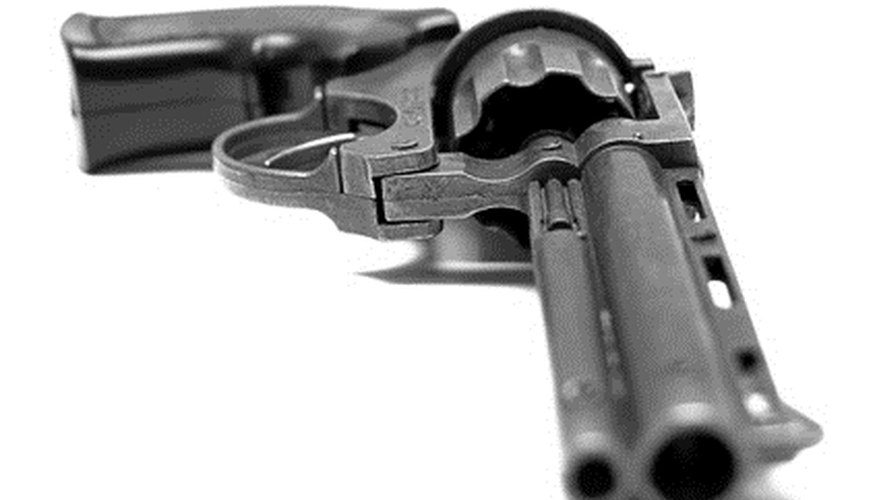
Firearms that are cast out of steel can become corroded when exposed to the elements. Since the late 1800s, plating has been the favorable way to seal the metal and preserve both the decorative and working parts of the firearm. Because steel is porous, finer, softer metals such as nickel and chromium (or "chrome") are used to create a protective, lusterous finish. Based on the age of the firearm and the color of the finish, the difference between nickel and chrome plating can be determined.
Ensure that the firearm is unloaded. Carefully check the firearm to make sure that no ammunition is loaded in the chamber. Remove the magazine if there is one.
Determine the age of the firearm. If you don't know the year the firearm was manufactured, you can take it to an appraiser or to an antique firearm dealer. By looking at the serial number, he can tell you when it was made.
Determine the finish of the firearm based on age. Nickel plating was introduced in the 1870s and remained the primary way to plate guns through the early 20th century. Chrome plating wasn't invented until the 1920s and and wasn't readily available until after World War II ended in 1945. Therefore, if your weapon was manufactured before the 1920s, it is most likely nickel-plated.
Determine the finish of the firearm based on color. Nickel-plated guns have a faint yellow tint to them. Chrome-plated firearms have a bright bluish color.
Determine the finish of the firearm based on luster. Place the firearm on a table and hold a ruler perpendicular with the table so that the numbers are reflected in the metal. If you can make out two or more numbers, the gun is most likely plated in chrome. Firearms with a duller finish that don't reflect much are most likely nickel.
Have a professional determine the finish. If you still are unsure, a firearms specialist can determine the finish for you.
References
Writer Bio
Linde Aseltine's began writing professionally in 1992 for "The Hartford Courant." Her short fiction has appeared in literary magazines such as "Glimmer Train," and one of her scripts was featured in the IFP Market. Aseltine received her Bachelor of Arts in dramatic writing from the University of New Hampshire and her Master of Fine Arts in screenwriting from the University of Southern California.



